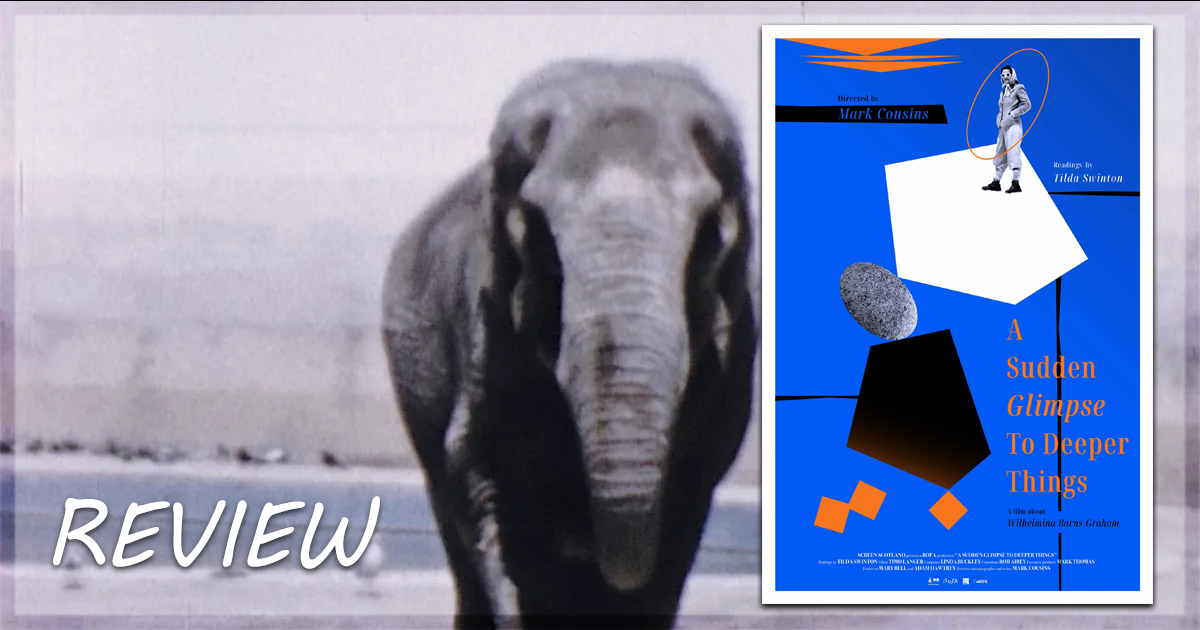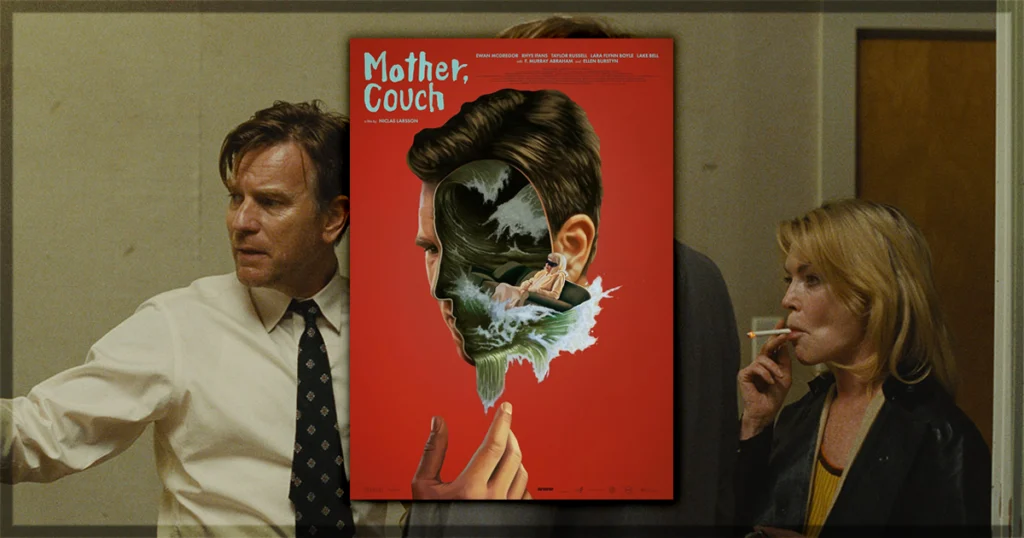Mark Cousins is an Irish author and filmmaker. He is well-known for his literary work on film. His book The Story of Film is an introductory book in cinema history that is taught in many film courses. Besides serving as the premise to a 930-minute documentary in 2011, The Story of Film: An Odyssey. In 2021, it had a complementary 160-minute sequel, which world Premiered at the Festival de Cannes, The Story of Film: New Generation. His style is a combination of docu-essays with high doses of personal anecdotes. His repertoire crows the subject he is discussing, and he takes the necessary time to develop his argument.
A Sudden Glimpse to Deeper Things from Mark Cousins
Fresh off a World Premiere at the Karlovy Vary International Film Festival, winning the Crystal Globe for Best Film, Cousins presents A Sudden Glimpse to Deeper Things, his new essay about Scottish painter Wilhelmina Barns-Graham. The film has a five-part structure in which Cousins approaches an aspect of her personality. The first one, from a distance, observes her from the outside. It is the initial presentation of the public to that figure. We see an old lady with cozy and warm clothes. Suddenly, an excerpt of archival footage shows the entrance of the Balmungo House, an aristocratic-styled residence. Added to the director’s voice-over, we learn multiple facts about her biography in a few minutes.
Barns-Graham and a worldview as interpreted through art
However, Cousins chooses to interrupt the presentation of new elements about her life and decides to dive into her life views through the art. Barns-Graham escapes her conservative and violent household, where her father discourages her artmaking, and she goes to St. Ives, a seaside city that she would be hugely inspired by. Her work in the 1940s was much based on the look she would see from her window. A few minutes after the critical introductions of her history, Cousins goes to the second part, Willie’s brain. In it, he will present a base for his thesis throughout the documentary; she had synesthesia. An ability that enables the person to connect with the outside world through colors. This characteristic of her brain is essential to understanding her art, which is the focal point of Cousin’s analysis.
Tilda Swinton as narrator
Strikingly, Academy Award Winner Tilda Swinton narrates Willie’s diary lines. Through the diary, Willie leads a fascinating journey in her art. It ranges from more than 40 years of work and presents her brightness. Willie would paint with a looking mirror. Then, she could check if both sides were evenly painted and balanced. She would create an alphabet for each color, and F would stand for the rust, vulnerable. The condition would complement her creativity; one might even say it was crucial. The forms and colors were the pillars of her artistic process. The director shows the maturity of her art, and her life events are visible through them. In this sense, the third part, the climb, reflects how an experience molded her whole career from the 1950s until the end.
On May 29th, 1949, Barns-Graham climbed the Swiss Alps, which changed her relationship with her painting. The glacial shapes intrigued her in such an impactful manner that it became the default she would go for in new work. The lines became more abstract, and they did not conform with the pattern of the portrait of natural landscapes by other artists. She would follow her style, representing her modernist sense but also defying the limits of her creativity.
To sum up, the fourth part of Infected is a manifesto of her artistry. The form she would look down while painting when the common was to look up to the sky and rock formats—also, the surrealism and dramaticity on the canvas. Willie would follow her connection with the forms and deliver an impressive beauty.
The last part, which contains the previous twenty minutes, loses a bit of breath. It needs to be more consistent and engaging than the four other parts. In this sense, when the focal lens goes exclusively to Willie’s life, it loses tones, and shapes become conventional. Willie’s ones present a lifework filled with colors and abstracts in her way. For those not used to Cousins’ frequent interactions, it seems odd how he shifts from Cousins to any of his life anecdotes. Somehow, he manages to make it coherent. He films his Fibonacci tattoo on his left hand, connecting with her fascination for mathematics. It can be challenging. However, his approach to their art makes it an always engaging experience.
Final thoughts on A Sudden Glimpse to Deeper Things
In one of Swinton’s lines, she narrates what Willie wrote down as a wave of more profound things while she was in the Alps. When Cousins focuses on the geniuses of Willie and questions British artistic consensus on her place in the canon, the feeling reaches some rewarding depths. Indeed, it feels slightly shallow when it is exclusively on her life. However, Cousins is a veteran, and his work cataloging all of her arts alongside the state and allowing us to take a guided tour throughout this essay is worth it. Cousins’ guided tour has its shallow moments, but those glimpses of deeper meanings make us greatly appreciate Wilhelmina Barns-Graham’s experimentations and contributions to the art.
A Sudden Glimpse to Deeper Things recently premiered at the Karlovy Vary International Film Festival.
Learn more about the film at the Reservoir Docs website.
You might also like…
‘Mother, Couch’ Review: A Surreal Journey Through Family Dynamics and Existential Conflict


